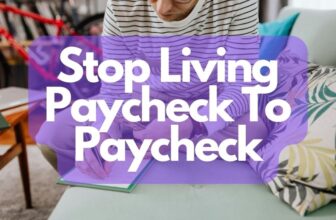
How to Save Money as a Couple to Buy Your First House
Dreaming of buying your first home together? It’s an exciting journey but can feel overwhelming. The good news is that with some planning, discipline, and teamwork, you can turn that dream into reality. Here’s a practical guide on how to save money as a couple to buy your first house.
Read also: A Student’s Guide to Cutting Spending and Budgeting Like a Pro
1. Have an Honest Money Talk
Discuss Your Financial Goals
Before you start saving, sit down and have an open conversation about your financial goals. What kind of house do you want? How much are you willing to spend? When do you want to buy it? Make sure you’re both on the same page and set clear, realistic goals.
Assess Your Finances
Take a good look at your current financial situation. Review your incomes, savings, debts, and monthly expenses. Understanding where you stand financially will help you create a solid plan to reach your home-buying goal.
2. Create a Joint Budget
Track Your Expenses
Start by tracking all your expenses for a month. Write down every single purchase, from groceries to coffee runs. Use an app, a spreadsheet, or just a notebook. This will help you see where your money is going and identify areas where you can cut back.
Combine Your Incomes
Combine your incomes to get a clear picture of your total monthly earnings. This will help you understand how much you can realistically save each month after covering your essential expenses.
Prioritize Savings
Once you have a clear picture of your finances, create a budget that prioritizes savings. Allocate a portion of your combined income to your house fund. Aim to save at least 20% of your income, but adjust this based on your financial situation.
3. Cut Unnecessary Expenses
Review and Reduce Bills
Take a close look at your monthly bills and see where you can cut costs. Can you switch to a cheaper phone plan? Bundle your insurance policies? Reduce your utility usage? Small changes can add up to big savings over time.
Limit Dining Out
Eating out can be expensive. Try to cook at home more often and pack lunches for work. Not only is it healthier, but it’s also a great way to save money. Set a monthly dining-out budget and stick to it.
Cancel Unused Subscriptions
Do you really need all those streaming services, subscription boxes, and magazine subscriptions? Cancel any that you don’t use regularly. This can save you a surprising amount of money each month.

4. Find Additional Income Sources
Get a Side Gig
If your schedules allow, consider picking up a side gig. Whether it’s freelance work, tutoring, or selling handmade crafts online, a little extra income can go a long way towards your house fund.
Sell Unused Items
Go through your belongings and sell anything you don’t need. Platforms like eBay, Craigslist, and Facebook Marketplace make it easy to turn your clutter into cash. It’s a win-win: you declutter your home and boost your savings.
Use Cashback and Rewards Programs
Sign up for cashback and rewards programs on your everyday purchases. Use credit cards that offer rewards or cashback for spending on groceries, gas, and other essentials. Just make sure to pay off your balance in full each month to avoid interest charges.
5. Automate Your Savings
Set Up Automatic Transfers
Make saving money effortless by setting up automatic transfers to your house fund. Schedule a portion of your paycheck to be automatically deposited into a separate savings account each month. This way, you’re less likely to spend that money.
Open a High-Interest Savings Account
Consider opening a high-interest savings account for your house fund. These accounts offer higher interest rates than regular savings accounts, helping your money grow faster.
6. Minimize Debt
Pay Off High-Interest Debt
Focus on paying off high-interest debt, such as credit card balances, as quickly as possible. High-interest debt can eat into your savings and make it harder to reach your financial goals.
Consolidate Debt
If you have multiple debts, consider consolidating them into a single loan with a lower interest rate. This can simplify your payments and reduce the amount of interest you pay over time.
Avoid Taking On New Debt
While you’re saving for a house, try to avoid taking on new debt. This includes financing new cars, taking out personal loans, or running up credit card balances. Focus on saving and paying down existing debt instead.
7. Research and Plan for Homebuying Costs
Understand the Full Cost of Buying a Home
Buying a home involves more than just the purchase price. Research and plan for additional costs such as closing costs, property taxes, homeowners insurance, and maintenance expenses. Knowing these costs upfront will help you save more accurately.
Save for a Down Payment
Aim to save at least 20% of the home’s purchase price for a down payment. A larger down payment can help you secure a better mortgage rate and reduce your monthly payments.
Look Into First-Time Homebuyer Programs
Research first-time homebuyer programs in your area. These programs can offer benefits such as lower down payment requirements, reduced interest rates, and assistance with closing costs.
8. Stay Motivated and Accountable
Set Milestones
Break your savings goal into smaller milestones and celebrate when you reach them. This can help keep you motivated and make the goal feel more achievable. For example, celebrate when you’ve saved your first $5,000 or when you hit 50% of your goal.
Keep Each Other Accountable
Saving money is a team effort. Keep each other accountable by having regular check-ins to discuss your progress and any challenges you’re facing. Encourage each other and stay focused on your shared goal.
Visualize Your Goal
Create a visual representation of your savings goal, like a chart or a vision board. Place it somewhere you’ll see it every day. This constant reminder can help you stay motivated and keep your eyes on the prize.
9. Consider Professional Help
Meet with a Financial Advisor
If you’re unsure where to start or need help creating a savings plan, consider meeting with a financial advisor. They can provide personalized advice based on your financial situation and help you develop a strategy to reach your goals.
Attend Homebuying Workshops
Many communities and organizations offer homebuying workshops for first-time buyers. These workshops can provide valuable information about the homebuying process, financing options, and how to save for your first home.

10. Stay Flexible and Adaptable
Adjust Your Plan as Needed
Life is unpredictable, and your financial situation might change. Be prepared to adjust your savings plan as needed. If you encounter unexpected expenses or changes in income, don’t get discouraged. Adapt your plan and keep moving forward.
Keep the Long-Term Perspective
Saving for a house is a long-term goal, and it requires patience and persistence. Keep the big picture in mind and remember why you’re saving. Your dream home is worth the effort and sacrifices you’re making now.
Conclusion
Saving for your first house as a couple is a journey that requires teamwork, discipline, and a bit of creativity. By having open conversations about your financial goals, creating a realistic budget, cutting unnecessary expenses, finding additional income sources, automating your savings, minimizing debt, and staying motivated, you can achieve your dream of homeownership. Remember, every little bit counts, and with determination and persistence, you’ll be unlocking the door to your first home in no time.






